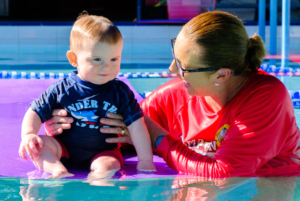Why are toddler drownings on the rise?
“Twenty seconds and a few centimetres of water is all it takes for a toddler to drown”, states Kidsafe Victoria chief executive Melanie Courtney. “Besides swimming pools, potential drowning hazards included portable pools, baths, buckets, eskies with melted ice, dams, fishponds and even pet water bowls.”
 Toddler drownings have doubled
Toddler drownings have doubled
Drownings have doubled among young children and continue to be the leading cause of accidental death for Australian children under five years of age. They are curious and increasingly mobile but lack an understanding of water-related hazards, making them vulnerable to drowning in and around the home, particularly in private swimming pools. For every death among children aged 0-4 years, there are eight non-fatal drownings. This is the highest fatal to non-fatal drowning ratio of any age group.
Data from the Royal Life Saving Australia’s National Drowning Report shows that 25 children aged 0-4 years drowned in 2020-21 – a 108 per cent increase on the previous year. The number of drownings in bathtubs more than doubled compared to the year before. Queensland has recorded the highest number of drownings among young kids, followed by NSW in the past 18 years. Boys accounted for 61 per cent of all drownings and two-thirds of fatalities occurred among children aged 1-2 years.
Population Health lecturer Dr. Amy Peden sees a connection between the pandemic and why more toddlers drowned last year. “There is concern about lockdowns and parents working from home putting pressure on supervision of children in bathtubs, and around pools and farm dams. Similarly, there may be a flow on effect into adulthood of children who had their learn to swim journey interrupted or even ended during the COVID-19 pandemic.”
(Full article: https://www.smh.com.au/national/twenty-seconds-is-all-it-takes-doubling-in-toddler-drownings-amid-lockdowns-20220209-p59v33.html)
Hampton Swim School Swim Program
Learning to swim and water safety skills are widely recognised as the key to preventing drowning. Learning to swim is only one component of reducing the risk of toddlers drowning. Educating parents and carers about keeping young children safe from drowning is another.
Our BabyBegins and BabySteps programs provide exactly that. Water safety education to (especially first time) parents, while helping our youngest swimmers get comfortable in the water and integrating reflexes into learnt responses for submersion, floating, rolling & turning, holding on and directional movement. All with continued close contact with their carer.
This has been our mission as a swim school since 1999. To prevent drownings in our community. In any age group. Swimming is for everyone.
To find out more about our swim programs or to book lessons, please click here
